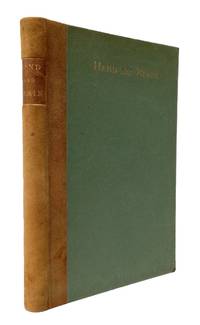Book Collecting
Roycroft Press

Elbert Hubbard was one of the most influential forces in American business as the new century opened and the Roycroft artisan community that he founded in East Aurora, New York was the first and most successful purveyor of Arts and Crafts in the nation.
After a brief stint at Harvard during the summer of 1893, which was followed by a walking tour of England, Hubbard tried to find a publisher for a series of biographical sketches he had created called Little Journeys. With little success, Hubbard decided to publish the work himself.
Word travelled fast and visitors soon began to pour in to meet Hubbard and the print shop expanded. Initially, Roycroft visitors were housed in the print worker’s living quarters, but a hotel was soon built to house the ever-increasing number of guests. In order to furnish the new additional, Hubbard had local craftsmen make a simple, straight lined style of furniture, which became popular among the visitors, many of whom wished to buy similar pieces for their homes. And with that, the community of Roycroft began to truly be established: a furniture manufacturing industry was created in the space where craftspeople were skilled metalsmiths, leathersmiths, and bookbinders.
The community flourished and was at its peak in 1910 with over 500 workers. By 1915, not only had Elbert written the inspirational pamphlet, A Message to Garcia, with an estimated printing of 40 million copies, but he was also publishing monthly magazines, The Fra and The Philistine, in addition to an almost constant nationwide lecture series and the monthly publication of additions to the original Little Journeys series that started it all.
Unfortunately, Hubbard and his wife, Alice, who had been travelling to England to being a lecture tour, were aboard the Lusitania when it sank in 1915. Their son, Bert, then became responsible for the leadership of the Roycroft community. Though Bert widened sales distribution for the Roycrofters, changing American tastes led to slowly declining sales figures and in 1938, the Roycrofters closed shop. Today, Roycroft items — examples of the community’s various artisan skills — are highly sought after by collectors not only for their rarity, but also their beautiful craftsmanship.
